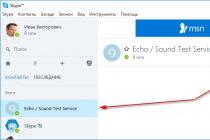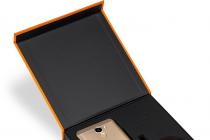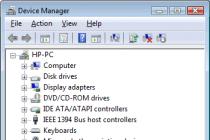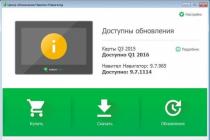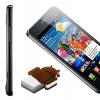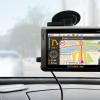tracker example (15)
If you don't need to update at the moment the patch is lost, you can change Stephen Daye's solution so that you have a method that checks if the patch is present.
So you can just check it when you need GPS data and you don't need this GpsStatus.Listener.
"Global" variables:
Private Location lastKnownLocation; private long lastKnownLocationTimeMillis = 0; private boolean isGpsFix = false;
This is the method that is called inside onLocationChanged () to remember the update time and current location. In addition, it updates "isGpsFix":
Private void handlePositionResults (Location location) (if (location == null) return; lastKnownLocation = location; lastKnownLocationTimeMillis = SystemClock.elapsedRealtime (); checkGpsFix (); // optional)
This method is called whenever I need to know if there is a GPS fix:
Private boolean checkGpsFix () (if (SystemClock.elapsedRealtime () - lastKnownLocationTimeMillis< 3000) { isGpsFix = true; } else { isGpsFix = false; lastKnownLocation = null; } return isGpsFix; }
In my implementation, I first run checkGpsFix (), and if the result is correct, I use the "lastKnownLocation" variable as my current position.
How can I check the current status of the GPS receiver? I already checked the LocationListener onStatusChanged method but somehow it seems that it doesn't work, or just the wrong possibility.
Basically I just need to know if the GPS icon at the top of the screen is blinking (no real fix) or solid (fix available).
So let's try a mix of all the answers and updates and do something like this:
- Add ACCESS_FINE_LOCATION permission to your manifest
- Get an instance of the LocationManager system
- Create a GpsStatus.Listener that responds to GPS_EVENT_SATELLITE_STATUS
- Register listener with LocationManager using addGpsStatusListener
A GPS receiver might be something like this:
GpsStatus.Listener listener = new GpsStatus.Listener () (void onGpsStatusChanged (int event) (if (event == GPS_EVENT_SATELLITE_STATUS) (GpsStatus status = mLocManager.getGpsStatus (null); Iterable
The APIs are a bit unclear about when and what GPS and satellite information is provided, but I think the idea is to see how many satellites are available. If it is below three, then you cannot fix it. If it's more then you should have a fix.
Probably trial and error allows you to determine how often Android reports satellite information and information about each GpsSatellite object.
I may be wrong, but it seems that people seem to be going off-topic
i just need to know if the gps icon at the top of the screen is blinking (no actual fix)
This can be easily done with
LocationManager lm = (LocationManager) getSystemService (LOCATION_SERVICE); boolean gps_on = lm.isProviderEnabled (LocationManager.GPS_PROVIDER);
To see if you have a reliable fix, things get a little tricky:
Public class whatever extends Activity (LocationManager lm; Location loc; public void onCreate (Bundle savedInstanceState) (super.onCreate (savedInstanceState); setContentView (R.layout.main); lm = (LocationManager) getSystemService (LOCATION_SERVICE); loc = null; request_updates ();) private void request_updates () (if (lm.isProviderEnabled (LocationManager.GPS_PROVIDER)) (// GPS is enabled on device so lets add a loopback for this locationmanager lm.requestLocationUpdates (LocationManager.GPS_PROVIDER, 0, 0, locationListener);)) LocationListener locationListener = new LocationListener () (public void onLocationChanged (Location location) (// Each time the location is changed we assign loc loc = location;) // Need these even if they do nothing. Can "t remember why.public void onProviderDisabled (String arg0) () public void onProviderEnabled (String provider) () public void onStatusChanged (String provider, int status, Bundle extras) ());
Now when you want to know if you are fixed?
If (loc! = Null) (// Our location has changed at least once blah .....)
If you want to be fancy you can always have a timeout using System.currentTimeMillis () and loc.getTime ()
Works reliably on at least N1 since 2.1.
the new member was unfortunately unable to comment or vote, however Stephen Deye's action above was the perfect solution for the same problem I was looking for help with.
slight change to the following line:
< 3000;
IsGPSFix = (SystemClock.elapsedRealtime () - mLastLocationMillis)< (GPS_UPDATE_INTERVAL * 2);
basically since I am building a slow game and my refresh interval is already set to 5 seconds once the gps signal goes off for 10+ seconds, i.e. at the right time to release something.
cheers mate, spent about 10 hours trying this solution before I found your post :)
run into a similar issue while working on my MSc project, it seems that Deye's answer mistakenly reported "no fix" as long as the device stays in a static location. I modified the solution a bit, which seems to work fine for me in a static location. I don't know how this will affect the battery as this is not my main problem, but this is how I did it by re-requesting location updates when the time to fix it.
Private class MyGPSListener implements GpsStatus.Listener (public void onGpsStatusChanged (int event) (switch (event) (case GpsStatus.GPS_EVENT_SATELLITE_STATUS: if (Global.getInstance (). CurrentGPSLocation! = Null) (if ((SystemClock.elapsed )< 20000) { if (!hasGPSFix) Log.i("GPS","Fix Acquired"); hasGPSFix = true; } else { if (hasGPSFix) { Log.i("GPS","Fix Lost (expired)"); lm.requestLocationUpdates(LocationManager.GPS_PROVIDER, 2000, 10, locationListener); } hasGPSFix = false; } } break; case GpsStatus.GPS_EVENT_FIRST_FIX: Log.i("GPS", "First Fix/ Refix"); hasGPSFix = true; break; case GpsStatus.GPS_EVENT_STARTED: Log.i("GPS", "Started!"); break; case GpsStatus.GPS_EVENT_STOPPED: Log.i("GPS", "Stopped"); break; } } }
After working with GPS on Windows mobile devices for several years, I realized that the concept of “losing” GPS fixation can be subjective. To just listen to what the GPS says, adding an NMEAListener and parsing the sentence will tell you if the fix was "valid" or not. See http://www.gpsinformation.org/dale/nmea.htm#GGA. Unfortunately, with some GPS devices, this value will fluctuate back and forth even during normal "good fix" progress.
So another solution is to compare the UTC time of the GPS location with the phone time (converted to UTC). If they are different from the time difference, you can assume that you have lost your GPS position.
I know this is a little late. However, why not use NMEAListener if you want to see if you have a fix. From what I've read, NMEAListener will provide you with NMEA sentences and from there you will select the correct sentence.
The RMC proposal contains a commit status that is either A for OK or V for warning. GGA offer contains Fix Quality (0 invalid, 1 GPS or 2 DGPS)
I cannot offer you any java code as I am just getting started with Android, but I made a GPS library in C # Windows apps that I am going to use with Xamarin. I just came across this thread because I was looking for information about the provider.
From what I've read so far about the Location object, I don't like everything so much about methods like getAccuracy () and hasAccuracy (). I am used to extracting HDOP and VDOP sentences from NMEA sentences to determine how accurate my corrections are. It's quite common to have a fix, but have a lousy HDOP which means your horizontal accuracy isn't very good. For example, sitting at your desk debugging an external Bluetooth GPS device strongly opposing the window, you will most likely get a fix, but very bad HDOP and VDOP. Place your GPS device in a flower pot outside or something similar, or add an external antenna to the GPS and get good HDOP and VDOP values right away.
so many messages ...
GpsStatus.Listener gpsListener = new GpsStatus.Listener () (public void onGpsStatusChanged (int event) (if (event == GpsStatus.GPS_EVENT_FIRST_FIX) (showMessageDialog ("GPS fixed");)));
adding this code, with addGpsListener ... showMessageDialog ... just shows the standard dialog with the line
did the job great for me :) Thanks a lot: =) (sry for this post, couldn't vote yet)
As a developer of SpeedView: GPS Speedometer for Android, I had to try every possible solution to this problem, all with the same negative result. Let's recap what doesn't work:
- onStatusChanged () doesn't get called in Eclair and Froyo.
- Just counting all available satellites is of course useless.
- Checking that any of the satellites return true for usedInFix () is also not very useful. The system is clearly losing the fix, but keeps reporting that it is still using multiple sats.
So here is the only working solution I have found and the one I am actually using in my application. Let's say we have this simple class that implements GpsStatus.Listener:
Private class MyGPSListener implements GpsStatus.Listener (public void onGpsStatusChanged (int event) (switch (event) (case GpsStatus.GPS_EVENT_SATELLITE_STATUS: if (mLastLocation! = Null) isGPSFix = (SystemClock.elapsedRealtime () - mLisillastLocation)< 3000; if (isGPSFix) { // A fix has been acquired. // Do something. } else { // The fix has been lost. // Do something. } break; case GpsStatus.GPS_EVENT_FIRST_FIX: // Do something. isGPSFix = true; break; } } }
OK, now we will add the following to onLocationChanged ():
@Override public void onLocationChanged (Location location) (if (location == null) return; mLastLocationMillis = SystemClock.elapsedRealtime (); // Do something. MLastLocation = location;)
That's all. Basically, this is the line that does it all:
IsGPSFix = (SystemClock.elapsedRealtime () - mLastLocationMillis)< 3000;
You can of course tweak the millis value, but I would suggest setting it around 3-5 seconds.
This actually works, and while I haven't looked at the source code that draws the custom GPS icon, it comes close to replicating its behavior. Hope this helps someone.
If you just need to know if there is a fix, then check the last known location provided by the GPS receiver and check the .getTime () value to see how many years have passed. If it's recent enough (like a few seconds), you have a fix.
LocationManager lm = (LocationManager) context.getSystemService (LOCATION_SERVICE); Location loc = lm.getLastKnownLocation (LocationManager.GPS_PROVIDER); // Get the time of the last fix long lastFixTimeMillis = loc.getTime ();
And finally, compare this with the current date time (in UTC!). If it's recent enough, you have a fix.
I do this in my application and it is so good so far.
Well, in the end every working approach will result in this (also applies to the deprecated GpsStatus.Listener):
Private GnssStatus.Callback mGnssStatusCallback; @Deprecated private GpsStatus.Listener mStatusListener; private LocationManager mLocationManager; @Override public void onCreate () (mLocationManager = (LocationManager) getSystemService (LOCATION_SERVICE); mLocationManager = (LocationManager) this.getSystemService (Context.LOCATION_SERVICE); if (checkPermission.LOCATION_SERVICE); if (checkPermission ()) (mLocationLPSERVICE); if (checkPermission ()) (mLocationLPSERVICE); if (checkPermission ()) (MINocationLPSERVICE , this);) if (Build.VERSION.SDK_INT> = Build.VERSION_CODES.N) (mGnssStatusCallback = new GnssStatus.Callback () (@Override public void onSatelliteStatusChanged (GnssStatus status) (satelliteStatusChanged (public);) void (int ttffMillis) (gpsFixAcquired ();)); mLocationManager.registerGnssStatusCallback (mGnssStatusCallback);) else (mStatusListener = new GpsStatus.Listener () (case.Override public void onGpsStatusChanged (switch_EVITE : satelliteStatusChanged (); break; case GpsStatus.GPS_EVENT_FIRST_FIX: // Do something.gpsFixAcquired (); break;))); mLocatio nManager.addGpsStatusListener (mStatusListener); )) private void gpsFixAcquired () (// Do something. isGPSFix = true;) private void satelliteStatusChanged () (if (mLastLocation! = null) isGPSFix = (SystemClock.elapsedRealtime () - mLastLocationMillis)< (GPS_UPDATE_INTERVAL * 2); if (isGPSFix) { // A fix has been acquired. // Do something. } else { // The fix has been lost. // Do something. } } @Override public void onLocationChanged(Location location) { if (location == null) return; mLastLocationMillis = SystemClock.elapsedRealtime(); mLastLocation = location; } @Override public void onStatusChanged(String s, int i, Bundle bundle) { } @Override public void onProviderEnabled(String s) { } @Override public void onProviderDisabled(String s) { }
Note: This answer is a combination of the answers above.
The GPS icon appears to change its state in accordance with accepted broadcast intent. You can change your state yourself with the following code examples:
Notify that GPS is on:
Intent intent = new Intent ("android.location.GPS_ENABLED_CHANGE"); intent.putExtra ("enabled", true); sendBroadcast (intent);
To report that GPS is receiving fixes:
Intent intent = new Intent ("android.location.GPS_FIX_CHANGE"); intent.putExtra ("enabled", true); sendBroadcast (intent);
Please report that GPS is no longer receiving fixes:
Intent intent = new Intent ("android.location.GPS_FIX_CHANGE"); intent.putExtra ("enabled", false); sendBroadcast (intent);
Notify that GPS is disabled:
Intent intent = new Intent ("android.location.GPS_ENABLED_CHANGE"); intent.putExtra ("enabled", false); sendBroadcast (intent);
Example code for registering a receiver:
// MyReceiver must extend BroadcastReceiver MyReceiver receiver = new MyReceiver (); IntentFilter filter = new IntentFilter ("android.location.GPS_ENABLED_CHANGE"); filter.addAction ("android.location.GPS_FIX_CHANGE"); registerReceiver (receiver, filter);
After receiving these broadcasts, you may notice changes in the GPS status. However, you will only be notified if the status changes. Thus, it is not possible to determine the current state using these intents.
Setting a time interval to check for a fix is not a good choice. I noticed that onLocationChanged is not called if you are not moving.. which is understandable since the location does not change :)
The best would be:
- check interval for last received location (in gpsStatusChanged)
- if this interval is more than 15 with a given variable: long_interval = true
- remove the location receiver and add it again, usually after that you get an updated position if the location is actually available, if not - you probably lost the place
- in onLocationChanged you just set long_interval to false.
While there is a huge pool of solutions above, nobody mentioned com.koushikdutta.ion: https://github.com/koush/ion
He also asynchronous and very simple in use:
Ion.with (context) .load ("http://example.com/thing.json") .asJsonObject () .setCallback (new FutureCallback
Articles and Life Hacks
Isn't it nice to have a device close at hand that can get directions or show you where you are? And this device is either a smartphone or a tablet - it's especially nice when, having done, you got a phone with additional capabilities. It is known that each gadget at a different speed determines the location and finds a different number of satellites. That's why you need to know how to check gps in android(time before communication with satellites and the number of satellites found) in order to understand how long it will take for a "cold" or "hot" start.
What to check in gps
The quality of the gps-module depends on the hardware used, the materials of the case and its thickness, the location of the antenna for receiving signals from satellites.
Therefore, we take these features into account. If the device is running a processor from MTK, then gps will work slower than on Kualcom's processors. This is a feature of iron. If the body is thick, made of polycarbonate, and the antenna is a thin and small piece of foil, then the signal will be weak, as will the number of satellites found.
In the work of gps, the following parameters are determined:
1. Speed of communication with satellites. The more satellites are connected to the phone, the more accurate and faster your coordinates will be received.
2. The quality and accuracy of determining the location in a particular area (in the open air, in the city, in the forest, in the house). Directly depends on the first point.
3. Signal reception power. Will the device be able to work under forest cover, in an apartment, or is normal operation guaranteed only in the open air?
How to check a module
Do not forget that you must enable it before working and checking the module!
There are several ways, each of which one way or another helps to get a solution to the problem, like checking gps in android. Just as with applications, you can do this manually or using special programs. Below we will discuss each method.
Method 1 - checking the quality of work using standard, pre-installed tools. To do this, you need to go to the engineering menu, select the desired item and test the device. To get right where you need to, enter the key combination * # * # 3646633 # * # *, look for the YGPS item.
A round map appears in front of you, at first empty, but eventually filled with dots. Points are the number of satellites found. By timing the amount of time before finding the maximum number of satellites, we find out the speed and quality of our gps. As soon as you know, you can compare it with other devices. Data from other devices is available on the network, or you can use the devices of friends and acquaintances.
Method 2 - using specialized programs. Some programs have more advanced functionality than standard tools. You can find these programs on the forums or in the Play Market.
Often when buying a new smartphone for Android (especially from Chinese manufacturers), users are faced with the problem of GPS not working. And if, you do not use this functionality, then it's okay, but if it's the other way around, then the problem needs to be solved.
We will tell you why GPS does not work on Android and how to fix the situation.
Why GPS doesn't work on Android
The most common reasons for this unpleasant phenomenon are:
- Weak (defective) GPS module
- A cover that shields the GPS antenna and degrades the signal reception
- Invalid parameters in the system file GPS.conf
- Broken firmware
If there are problems with the GPS module (hardware), then only repairs can help, which can only be carried out by the specialists of the service center.
You can always remove the cover and check if the GPS is working correctly. And if there is a problem with the firmware, then just flash the device (how to do it, read here).
But we will not focus on this, but move on to the third point.
Automatic GPS setup
The easiest way is to set geolocation settings automatically using a special application, for example, FasterGPS:
You just need to choose your continent and region - the program will do the rest for you.
Manual GPS setting on android
You can also configure GPS manually. To edit the GPS.conf file you need Root-rights (how to get them -
Today, all modern smartphones are equipped with a built-in GPS module that shows your location. You can use your smartphone as a navigator while playing sports or traveling by car, and also use it to get the latest news or weather information in your city. Now let's figure out how to check the operation of GPS on Android, that is, whether the location module is working on your device or not.
Checking and configuring GPS using the app
Based on all the apps we tried, GPS Test turned out to be the simplest and most effective. This program can quickly help you find all the satellites in your area, pre-configure them and possibly use other functions.
Developer: Chartcross Limited
Features of the GPS Test for Android
- Shows information about visible satellites;
- Shows active satellites in use at the moment;
- Provides accurate geolocation data;
- Shows exact coordinates;
- Gives information about the time zone at the location;
- Indicates the position of satellites in the sky;
- Can serve as an electronic compass;
- Provides a variety of data ranging from time and date to altitude;
- Provides information about sunrise and sunset times at the location where the device is located.
How to check the status of GPS navigator using GPS Test
We open the application, and if we see the inscription "3D Fix" in the upper left corner, it means that the navigator is working correctly and performs all its functions without the slightest problem. Shows "No Fix"? Unfortunately, there is a problem with the device and its well-coordinated work is impossible.
Constant switching between the above modes may also be due to poor conditions for obtaining a GPS signal. This is not only caused by being indoors, but even unsuitable weather conditions, such as rain or strong winds, can affect it.
Shows "off"? Everything is simpler here. The receiver is simply disabled. To enable it, we do an easy procedure: open “Settings”, go to the “Location” item. A new menu opens called Location Services. There are three modes in total:
- "By network coordinates"
- "GPS satellites"
- Ancillary data.
For the most accurate determination of the place, for example, in a car, we recommend activating all the points at once. Of the networks, of course, Wi-Fi works best, but if the conditions do not allow it (being on the street, etc., as it usually happens), use the mobile Internet.
Setting up and adjusting GPS through the engineering menu
This method will help you to check the quality of the established standards, which show how well GPS works on the phone.
- To do this, you need to move to the engineering menu. Enter the code (where we usually write the subscriber's number) * # * # 3646633 # * # *;
- Next, you need to find the YGPS item (or something similar);
- As a result, a map should appear on which there will be many yellow dots. They may not appear immediately.
It is these points that speak about the number of satellites that have been found. If you measure the time from the start of the scan to the full download of all found satellites, the quality of the installed GPS will become known. After that, this data can be compared with other devices, for example, by taking it from a friend.
Video instruction
Poor performance of GPS satellites indoors
But do not forget that GPS may not pick up the signal well when you are standing indoors (especially in a high-rise building) or near electrical appliances. So it is better to use the location function in an open area (street) or, in the most extreme case, by the window.
It is worth remembering that it is better not to leave GPS on all the time, use it only when necessary. This will keep the battery charged two or even three times longer. Using the widgets, you can put GPS on and off on your desktop.
If you find an error, please select a piece of text and press Ctrl + Enter.
gurudroid.net
Why GPS does not work on an Android device: reasons and solutions
Modern gadgets are already so sophisticated that you can determine your location without using GPS navigators anymore. Sometimes this is necessary for the correct operation of applications, sometimes - to create the correct route. When GPS does not work on Android, it becomes difficult. What could be the reason for this and what should be done to solve this problem?
Closed room
Any device does not pick up well or does not pick up a satellite signal at all, if it is in a closed room. Therefore, it is better to determine your location on the street. Ideally, the space should be free even from tall buildings and trees, so that the sky is completely open, so that nothing prevents the gadget from looking for a working signal and connecting to the necessary satellites.
Incorrect GPS setting
All devices are equipped with two GPS-modules. One is a standard receiver that can be enabled in the settings (General - Location - Mode). When choosing mobile networks or Wi-Fi, the device will determine the location from the towers without connecting to the GPS satellites. This method is the fastest, but it does not always give an accurate result.
When you select GPS Only, your phone or tablet will connect to satellites, but the device will take some time to do so. In this case, it is desirable to be on the street in an open area, or at least put the gadget on the windowsill. It is for the second module to work that the correct setting is needed. How to check if the device picks up a signal? To do this, you will have to download and install GPS Test - a diagnostic application.
Application in Google Market
After starting the program, select Update only in the AGPS settings, and Keep Screen On in Settings. Now you need to return to the main window of the program, the GPS test will begin on your tablet or phone. It is important, however, that Wi-Fi and mobile data should neither be enabled in the Location settings nor used at the moment.
Non-dying screen settings
If the diagnostics showed that the device does not find satellites, then you should check if the GPS setting on Android has been done correctly. How to set up GPS? To do this, you must first download any application that can process a GPS signal. If it does not help, you need to check the settings of the communicator COM port.
Unsuccessful flashing
After not the most successful attempts to flash a gadget or specifically a GPS module, not only the system can stop functioning, but also just its individual parts, for example, geolocation. It is also common to see GPS stop working on a Chinese device.
To fix this situation, you need to enable AGPS in the location and GPS settings. After that, you need to enter the engineering menu through the dialing window (the combination is different for all phones). If you cannot enter it, you will have to use any special program, but already with root rights. The order of actions in the Android engineering menu:
- on the Satellites tab of the YGPS tab, check if there is a signal, i.e. does the phone or tablet try to find satellites at all;
- go to the Information tab and there, in order, press the full, warm, hot, cold buttons (this is necessary to reset the previous settings);
- on the NMEA Log tab, press start;
- return to the Satellites tab and wait from 5 to 15 minutes until the device finds the maximum number of satellites and the GPS signal scales turn green;
- back to the NMEA Log tab, press stop.
This method is shown in more detail in the video.
Initial binding and calibration
It so happens that the device is located in some remote area. In this case, it is advisable to put it in an open area for a long time and wait until the search and binding takes place. Sometimes navigation may stop working because the compass calibration is wrong. Such a phone or tablet will be mis-oriented, resulting in a GPS problem on the device. To calibrate, you need to download a special application, GPS Essentials. After installing and running it, you need:
- Click on the compass icon.
- Choose a smooth, flat surface, put your communicator on it and remove all electrical appliances from it.
- Turn the device smoothly around each axis 3 times.
After that, you need to try to connect again and, if necessary, repeat the calibration.
Problems with the device itself
If a gadget, checked and configured in accordance with all the rules, still does not catch satellites, only a service center will help you to check the GPS settings and find the reason. It may be that the problem lies in the device itself.
androidster.ru
How to set up GPS on Android
Orientation in unfamiliar terrain, both in a huge metropolis or a small town, and in a village, in an open field, today is mainly carried out using a smartphone. It is much easier for a person to buy a phone with a built-in GPS module than to deal with maps, ask strangers for directions. Enter the coordinates - here's the complete route from point A to point B. But not everyone can figure out with modern gadgets, especially if they have not previously used such devices.
In this article we will tell you how to configure GPS on Android, what programs can and should be used for navigation and what to do if GPS stops working correctly!
GPS - a help or a panacea for the user?
Before proceeding to the description of the correct settings, it is worth mentioning this system, namely, its advantages and disadvantages. As you know, the geolocation system allows anyone to know their location, wherever they are. But at the same time, two negative factors can be distinguished:
- If you use the GPS option a lot on your Android, you will see that the battery will drain pretty quickly.
- The GPS system constantly monitors your movement, and all the data, oddly enough, is stored under your Google account. They even have a special service with which you can see where you were at a certain time, which places you visited, which countries you were in, and much more. And who knows what else remains with Google when using this module ...
Initial setup
And so, you bought a phone with built-in GPS or relatives gave you a gift. How to configure it? In principle, the service is disabled by default and you only need to activate it to configure it. To do this, go to the "Settings" item and find the "My location" tab and be sure to allow the system to access geodata on your smartphone. Also activate the items "By network coordinates", "By GPS satellites".
In the future, you will only need to tap down on the start screen of your device to bring up the quick access menu and activate the GPS service. There are usually buttons, tabs for working with wireless networks, mobile networks, phone brightness. Separate widgets can also be placed on the desktop to manage services.
The Android operating system usually comes with a location software installed by default. This can be, for example, Google Maps or Yandex Maps, depending on the developers. Despite the fact that all Android phones are initially certified by Google, the software is supplemented by companies that use this operating system in their phones.
Setting up GPS on phones with a Media Tek processor
If you're not in the know, all Android phone models are developed and equipped with different processors. Today, one of the leading companies is Media Tek, which provides processors of various configurations for smartphones. It also uses its own technology for the correct and stable operation of GPS-modules.
Above, we described the standard GPS settings that are present in almost every smartphone. If your device is powered by a Media Tek chipset, then in addition there will be an item "GPS EPO auxiliary data" in the settings. Activate this tab and go to the "EPO Settings" menu. Are you here? Fine! Now activate the Startup tab. Moreover, if at the time of setup you have the opportunity to connect to the Internet, you can immediately download special data that provides information about the position of the satellites. To do this, in this menu, you will need to click the "Download" button at the very bottom and wait until the files are downloaded.
GPS setup for advanced users
Attention! This subsection implies not only setting up, but also accelerating the operation of GPS in general on your smartphone. The fact is that the speed and accuracy of determining your current position is affected by information about satellites, namely, about their location. As a rule, in most smartphones this data is out of date due to an old software or operating system update.
Another reason is Chinese phones. In such devices, by default, the settings for the location of satellites for their country are prescribed, respectively, using GPS in Russia, the GPS module works much longer, because the data in it is incorrectly spelled out.
Have you ever noticed that your location is determined in 5-10 minutes? We usually attribute this to "phone performance", but far from it! What to do in this case? We suggest that you configure GPS on your Android with a little "hack".
Slow GPS performance is solved with A-GPS technology. Its essence is as follows: data on the position of satellites are stored on special servers and using the Internet your smartphone can connect to them and receive all the information in a matter of seconds. Thanks to this data, the GPS connects much faster and determines your location more accurately.
But, as mentioned earlier, in some models of smartphones, especially Chinese ones, data for their region is registered by default. To change them, you need to find the gps.conf file!
How to work with the gps.conf file! You can change the data in this file manually or download a ready-made one for a specific country. If you don't want to bother, then download it for your country from the link - https://app.box.com/s/w57s1v1n3hie7l5lk28i/2/1033932257
If you are going to edit gps.conf yourself, then find instructions on the Internet that describe each line and what it is responsible for. To edit, you will need to use the Root Explorer application and Root rights.
Attention! The file is located in the / system / etc directory. As soon as you replace it or edit it manually, save all the changes and download yourself the GPS Test app. This is a special utility with which you can clear all old satellite records and check if GPS is working correctly. Just install it, launch it and click the AGPS tab, restarting your smartphone after that. Once your phone is restarted, open the program again and check the location speed.
Modes of operation of the GPS module in Android
And the last, no less important point, which concerns GPS operating modes. Each smartphone has separate settings for this technology, which can be set at your discretion.
Go to Settings on your phone and select the Location tab. Please note that the menu items may differ slightly on different versions of Android. Then click on the "Operation mode" item. You will have three of them:
- "According to all sources"
- "By network coordinates"
- "By GPS satellites"
Now, specifically for each item!
The first mode is "By all sources". The GPS system will automatically connect to all possible networks, namely: wireless Wi-Fi points, mobile networks, satellites. This, after all, is the A-GPS technology, which provides the highest accuracy of the received data and increased operating speed. But at the same time, do not forget about the cons! Battery power will be consumed much faster in this mode!
The second mode is "By grid coordinates". Basically uses information only from access points and towers. But at the same time, the correctness of determining your location is slightly distorted. About a few meters, sometimes tens of meters.
The third mode is "By GPS satellites". Completely deactivates A-GPS technology. Your smartphone will only determine your location using satellites. Moreover, if you enter any building, the connection will be lost or temporarily interrupted.
Which mode to use is up to you. If you need to accurately determine the coordinates or location, then activate the first item. If the battery charge is low, but you need to somehow determine where you are, then activate the last item.
As you can see, GPS setting can be done in different ways and ways, depending on the version of Android, software, manufacturer. Over time, an increasing number of various applications and "hacks" appear on the forums to enhance the work of GPS, to introduce additional options into your smartphone. Stay tuned for updates and test!
mobimanual.ru
How to set up GPS on Android
Many modern communicators and tablets are equipped with a GPS receiver, but it happens that after the purchase, nowhere is it explained how to use it. Or, after the update, the Android GPS does not function. In any case, we will tell and show you how to bring a GPS navigator to your senses on a PDA.
In this video, the Android GPS setting was tested using the GPS Test program (free download from the Android Market).
GPS in navigators based on Android is usually equipped with two modules: 1 module - a standard GPS receiver, you can enable it through: Settings - Location and protection (or Location services). Next, you need to select - Wireless networks (or By network coordinates) - and the phone will determine your position by mobile towers by triangulation, or via a Wi-Fi network. This method is the fastest and does not require searching and connecting to satellites (data is also transmitted to Google). This detection method is not always accurate and may indicate an incorrect location.
When using GPS navigation satellites, the main GPS module turns on, it then determines the location by satellites. But such a check takes time to find suitable satellites. And most importantly - you must be on the street or you can put your phone on the windowsill. Also, a lot depends on the sensitivity (quality) of the GPS module - for example, the old HTC and the new state employee in the same conditions, the state employee could not find satellites even from the top floor, it was not difficult for HTC.
Today, all models of android smartphones and tablets have navigation modules. When we talk about navigation, we mean the device's ability to locate itself using signals from GPS satellites. This allows the use of programs such as navigator, with the help of which the optimal routes are laid along the route.
Today there is a wide selection of programs for android devices that perform the functions of a navigator. Below we will dwell in detail on how to properly turn on the GPS module, configure it and check its functionality, so that later your android navigator will work as accurately as possible. Of course, you can do without additional settings. Modern android devices are fully adapted for work, and in order to use a tablet or smartphone as a navigator, it is enough to launch the corresponding application. But if you spend a few minutes and adjust the operation of the GPS module, then you will be able to use the battery charge more economically, and, in general, you will get the best result of the android application.
Smartphones Wileyfox
First, let's make a small review of the Wileyfox Swift 2 Plus smartphone. It is a powerful, modern device with an attractive stylish design and an extremely affordable price. The Wileyfox brand entered the market in October 2015. Its products immediately attracted the attention of users and experts. To achieve this success, the company has provided its models with a number of significant advantages:
- Dual SIM mode
- Work in 4G LTE networks
- Original version of Android OS - Cyanogen OS firmware
- Quality materials and components
- Stylish modern design
- High performance
- Attractive price.
The brand's products were also highly appreciated in the expert environment. So, in December 2015, the Wileyfox Swift model, according to Forbes magazine, becomes the smartphone of the year. Two months later, Wileyfox won first place at the prestigious British Mobile News Awards-2016 in the Challenger manufacturer of the year nomination. And in October 2016, Wileyfox Spark + becomes the best choice among smartphones under 10 thousand rubles, according to the authoritative Internet resource Hi-Tech Mail.ru.
Wileyfox Swift 2 Plus
The smartphone model received an extremely stylish and comfortable thin aluminum alloy body. This made it lightweight, easy to use and very durable. Wileyfox Swift 2 Plus is based on a powerful and powerful 8-core Snapdragon 430 MSM8937 processor on 64-bit architecture and clocked at 1.4 GHz. The operating system is the original Cyanogen 13.1 firmware, which is based on OC Android 6.0.1. The device received 3 GB of RAM and 32 GB of internal memory (work with microSDXC cards up to 64 GB is supported).

The device is equipped with a high-quality 2.5D curved at the edges of the 5-inch IPS HD display. Like most modern smartphones, there is a fingerprint scanner, NFC technology, GLONASS, GPS and A-GPS modules (which allows you to use the device as a navigator). The Wileyfox Swift 2 Plus has a powerful 16MP main camera and an excellent 8MP front camera. Quick Charge 3.0 fast charging technology is supported in hardware.
Setting up the GPS
Initially, you need to activate the GPS module of your android device. Without this, the navigator program will not be able to accurately determine the location and work correctly. To connect the GPS module, you need to go to the "Location" section in the "Settings" menu and select one of the proposed connection options. Initially, the android device is configured in such a way as to determine the location on all available channels. These are signal from GPS satellites, data from a cellular network, as well as information from Wi-Fi and Bluetooth networks. This allows you to accurately determine the point at which the android device is currently located. However, the high guaranteed accuracy of geolocation leads to increased power consumption, and the battery of your android device will drain very quickly.

The fastest and most economical way to navigate is to determine GPS coordinates using cellular data. At the same time, the location determination error is high, and in addition, if there is no connection with the network, it will not work at all. More accurate data can be obtained from GPS satellites. To configure the optimal mode of operation of navigation modules and android applications, leave the modes for determining the coordinates by the signal of the cellular network and by GPS satellites enabled.
The network location mode uses data received from the communication towers of the cellular operator, from the Wi-Fi and Bluetooth networks. This method is most relevant when connecting an android device to the Internet. Without an Internet connection, the location will be determined solely by the data from the communication towers. And if you are at a considerable distance from the nearest base station, then the accuracy of determining the coordinates will be very approximate.
In the absence of an Internet connection, to obtain the most accurate coordinates, it is better to additionally use the GPS satellite signal. By the way, if you use your smartphone as a navigator, then some applications build routes based on signals from GPS satellites. After you have enabled and configured the navigation modules of your android device, you can test their work. To do this, you can use special free android applications. Remember - the device works best with GPS signals in an open space. To check and test them, it is better to go outside.
GPS Test
If your navigator is unstable in your android device, use this application to check the quality of reception of the GPS signal from satellites by the GPS module. All common geolocation systems are supported (GPS, GLONASS, GALILEO, SBAS, Beidou and QZSS satellites). The application interface is represented by six information screens, on which the user is provided with all the necessary information:
- GPS Satellite Signal A graph showing the signal strength from each satellite the device receives. Information about the status of the network is also displayed.
- Screen showing the current location of the satellites.
- The exact coordinates of the device. The application shows both the coordinates themselves and the point on the world map. In addition, on this screen, you can see the border between day and night on the planet. This option may well be used as a navigator.
- Compass is another functional screen of the application.
- A screen showing the speed of movement, its direction and height above sea level.
- Time data screen: current time zone, sunrise and sunset data, etc.

It is worth emphasizing that this is one of the most downloaded android applications. Its advantage is that GPS Test can be used as a simple navigator. The disadvantages include the lack of a menu in Russian. However, the intuitive simplicity of the interface allows you to ignore this inconvenience.
AndroiTS GPS Test Free
The application is designed specifically for android devices equipped with navigation modules. With the help of the program, you can carry out a full test of the operation of GPS modules, or use it as a simple navigator - to determine your location. For the application to work correctly, you need to leave the building and into an open space. Android application supports all modern navigation systems.
Conclusion
In order for the navigator application in your android device to work as accurately and correctly as possible, it is important to correctly configure the operation of GPS modules. It is also worth downloading one of the applications for testing the operation of the smartphone's navigation functions. In addition, these applications can be used as a simple navigator - they will quickly and accurately determine your location.


